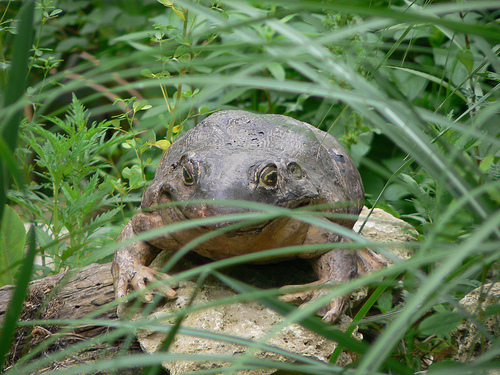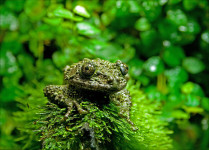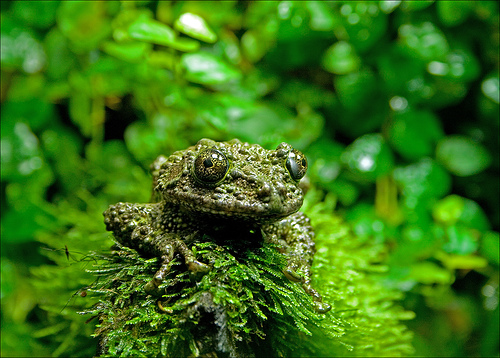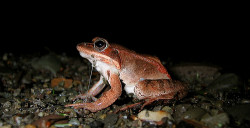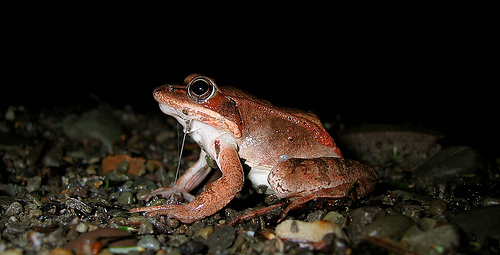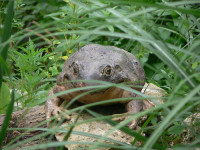
No need to listen for goliath frogs – they’re big enough to see!
- Goliath frogs are the biggest extant frogs in the world and they are native to specific sandy rivers in Equatorial Guinea and Cameroon in West Africa.
- The scientific name of a goliath frog is Conraua goliath, and it is from the Conrauidae family, the family of slippery frogs.
- Goliath frogs grow to sizes of 17 to 32 centimetres (6.7 to 12.6 inches) and range from 0.6 to 3.3 kilograms (1.3 to 7.3 pounds) in weight.
- Goliath frogs feature webbed feet, and they can leap a distance of up to 3 metres (10 feet).
- The diet of goliath frogs includes Dicraeia warmingii – vegetation that grows in water and is eaten by the tadpoles, while the frog eats insects, worms, small amphibians, crabs and other crustaceans, turtles, fish, and snakes.
Goliath Frog
Image courtesy of Peter Linehan/Flickr
- ‘Goliath frogs’ are also known as ‘giant slippery frogs’, though they should not be confused with Conraua robusta, the ‘Cameroon slippery frog’.
- Due to the absence of a vocal sac, goliath frogs cannot create typical noises, although they do produce a whistle, and they are said to have extensive hearing.
- The skin on the top side of goliath frogs is a dark shade of green in colour, while the belly is generally a greenish-yellow colour.
- Many hundreds of eggs are produced by a female goliath frog at one time, and they are laid in vegetation in nearby water, while the eggs and tadpoles that develop are of similar size to other species.
- Goliath frogs are classified as endangered due to the threats of illegal trade, hunting for eating, and habitat loss.
Bibliography:
Goliath Frog (Conrava Goliath), n.d, Wildscreen Arkive, http://www.arkive.org/goliath-frog/conraua-goliath/
Goliath Frog, 2015, San Diego Zoo, http://animals.sandiegozoo.org/animals/goliath-frog
Goliath Frog, 2015, Wikipedia, https://en.wikipedia.org/wiki/Goliath_frog
Khandelwal S, Conraua goliath, 2008, Animal Diversity, http://animaldiversity.org/accounts/Conraua_goliath






